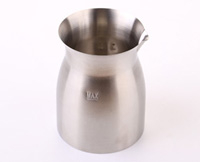|
Progressive die stamping consists of several individual work stations, each of which performs one or more different operations on the part. The part is carried from station to station by the stock strip and is cut out of the strip in the final operation.
Deep drawing is one of the most widely used processes in sheet metal forming. Apart from its use in many other sectors, it is applied in the automotive industry for the manufacturing of car body parts.
Deep draw metal forming is a complex process in which flat, sheet steel is formed into simple or more complex components. A circle or disc of sheet metal is first blanked from the coiled stock in the first station of the die. Then the flat blank is cupped around the nose of a punch and pressed into a die to form a cup.
The deep drawn metal stamping process gives deep drawn parts numerous advantages over traditionally machined, cast, or molding parts. It can reduce costs and waste, lower assembly costs and time, and improve metal structure to produce a stronger finished part. It also provides a net shape that minimizes waste. This means your part uses the minimum amount of metal required to deep draw the part, and you aren’t wasting money on metal that’s tossed in the scrap bin.
As deep drawing is a process for forming sheet metal between an edge-opposing punch and a die (draw ring) to produce a cup, cone, box or shell-shaped part, it induces powerful stresses. It is often more cost-effective than spinning when the run quantity is very large and a high production rate is required. It is one of the most popular metal forming methods as it involves the use of metal dies to form blank sheets of metal into a desired shape. Specifically, if the depth of the item created is equal to or greater than its radius, then the metal forming process can be called deep drawing.
Deep drawing process is especially beneficial when producing high volumes, since unit cost decreases considerably as unit count increases: once the tooling and dies have been created, the process can continue with very little downtime or upkeep. Tool construction costs are lower in comparison to similar manufacturing processes, such as progressive die stamping, even in smaller volumes; in these situation, deep drawing may also prove the most cost-effective manufacturing solution. |

